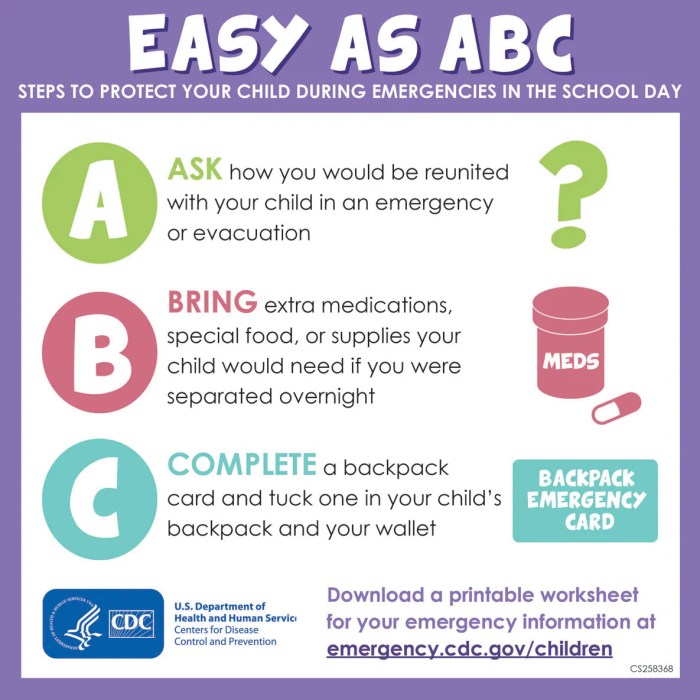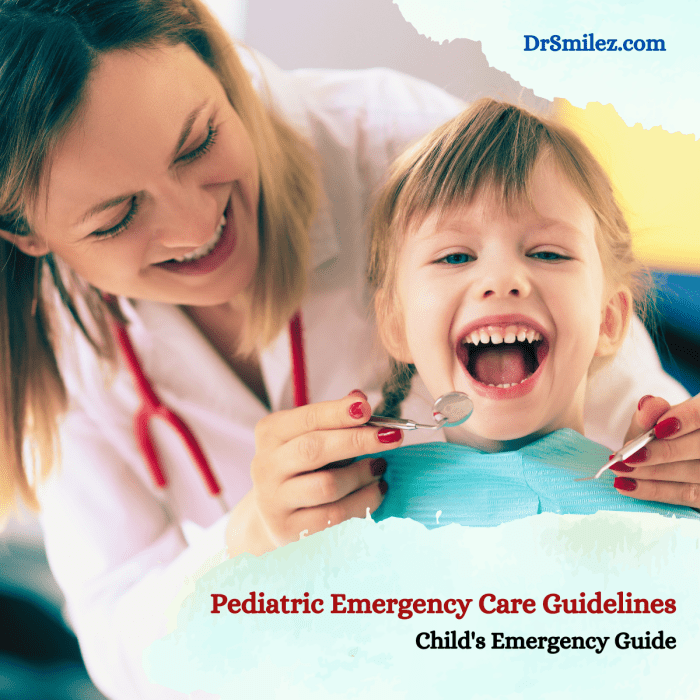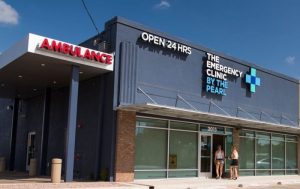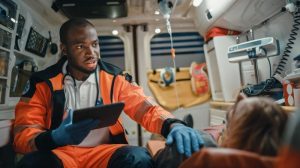
Diving into the world of Emergency Care for Children, this introduction unveils the critical need for specialized care in pediatric emergencies. From defining the scope to highlighting the importance, this topic is both informative and engaging.
As we delve deeper, we’ll explore the setup of pediatric emergency departments, common emergencies, and essential procedures to ensure children receive the best possible care in critical situations.
Introduction to Emergency Care for Children

Emergency care for children encompasses medical attention provided to pediatric patients in critical or life-threatening situations. It involves prompt and specialized care tailored to the unique needs of children.
The importance of specialized emergency care for pediatric patients cannot be overstated. Children have distinct physiological and emotional needs that require a different approach compared to adults. Timely and appropriate care can significantly impact outcomes and minimize long-term effects.
Statistics on Common Pediatric Emergencies
- According to the CDC, the most common pediatric emergencies include respiratory infections, trauma, and poisoning.
- Approximately 8,000 children are treated in emergency departments each day for injuries related to falls, making it one of the leading causes of pediatric emergencies.
- Seizures, fever-related illnesses, and allergic reactions are also frequent reasons for children seeking emergency medical care.
Pediatric Emergency Department
A pediatric emergency department is a specialized unit within a hospital that is dedicated to providing emergency care to children and adolescents. These departments are staffed with healthcare professionals who have specific training and experience in treating pediatric patients.
Setup and Features
- Pediatric emergency departments are designed to create a child-friendly and comforting environment, with colorful decor, toys, and distractions to help ease the anxiety of young patients.
- The staff in these departments are trained to communicate effectively with children and their families, taking into account the unique needs and concerns of pediatric patients.
Differentiation from General Emergency Department
- Pediatric emergency departments are equipped with specialized pediatric medical equipment and medications tailored specifically for children’s needs.
- The healthcare providers in a pediatric emergency department have specialized training in pediatric emergency care, making them better equipped to handle the unique medical needs of children.
Specialized Equipment and Resources
- Child-sized medical equipment and supplies to ensure proper care and treatment for pediatric patients.
- Pediatric-specific medications and dosages to address the unique physiological differences in children.
- Child life specialists who are trained to help children and families cope with the stress and anxiety of being in an emergency setting.
Common Pediatric Emergencies

When it comes to pediatric emergencies, it is crucial to be prepared and knowledgeable about common situations that may arise. Recognizing the signs and symptoms early on can make a significant difference in providing prompt and effective care to children in need.
Asthma Attacks
Asthma attacks are a common pediatric emergency characterized by sudden and severe breathing difficulties. Signs and symptoms include wheezing, coughing, shortness of breath, and chest tightness. In severe cases, the child may have difficulty speaking or may appear exhausted.
- Stay calm and reassure the child.
- Help the child sit upright and encourage slow, deep breaths.
- If the child has a prescribed inhaler, assist them in using it.
- If symptoms worsen or do not improve, seek emergency medical help immediately.
Febrile Seizures
Febrile seizures are convulsions that can occur in young children during a fever spike. These seizures are usually brief but can be alarming for parents and caregivers. Signs include sudden convulsions, loss of consciousness, and jerking movements.
- Lay the child on a flat surface away from any dangerous objects.
- Do not try to restrain the child or put anything in their mouth.
- Time the duration of the seizure and seek medical attention if it lasts longer than 5 minutes.
- After the seizure, keep the child comfortable and monitor their temperature.
Allergic Reactions
Allergic reactions in children can range from mild to severe, with symptoms appearing within minutes to hours after exposure to an allergen. Signs may include hives, swelling, itching, and difficulty breathing. In severe cases, anaphylaxis can occur.
- If the child has a known allergy, administer any prescribed medication such as an epinephrine auto-injector.
- Call emergency services immediately if the child shows signs of anaphylaxis, such as difficulty breathing or swelling of the face and throat.
- Monitor the child’s vital signs and keep them calm until medical help arrives.
- After the allergic reaction subsides, follow up with a healthcare provider for further management and prevention strategies.
Pediatric Emergency Care Procedures
When it comes to pediatric emergency care procedures, quick and effective intervention is crucial in ensuring the best possible outcomes for children in distress. From basic life-saving techniques like CPR to specialized interventions, being well-prepared to handle pediatric emergencies can make a significant difference in saving a child’s life.
Basic Pediatric Emergency Care Procedures
- Cardiopulmonary Resuscitation (CPR): Performing CPR on children requires knowledge of the correct techniques and ratios for compressions and breaths. It is essential to act swiftly and confidently in initiating CPR to maintain blood flow and oxygenation until further medical help arrives.
- Airway Management: Clearing the airway and ensuring proper breathing is essential in pediatric emergencies. Techniques such as the head tilt-chin lift maneuver can help maintain an open airway for effective respiration.
- Control of Bleeding: In cases of trauma or severe injuries, controlling bleeding promptly is crucial to prevent excessive blood loss. Applying direct pressure to the wound and elevating the affected limb can help stem the bleeding until professional medical assistance is available.
Importance of Quick and Effective Intervention
- Time is of the essence in pediatric emergencies, as children’s bodies respond differently to critical situations compared to adults. Quick intervention can prevent further complications and improve the chances of a positive outcome.
- Effective intervention not only saves lives but also reduces the risk of long-term disabilities resulting from delayed or inadequate care. Being prepared to act decisively in emergencies can significantly impact a child’s recovery and overall well-being.
Challenges and Considerations in Pediatric Emergency Care Procedures
- Size and Anatomy: Children have unique anatomical features that require adjustments in emergency care procedures. Proper positioning, equipment size, and technique modifications are essential to ensure effective treatment without causing harm.
- Communication and Consent: Communicating with children and their caregivers in emergency situations can pose challenges, especially when quick decisions need to be made. Establishing trust, providing clear information, and obtaining consent for procedures are crucial considerations in pediatric emergency care.
- Emotional Impact: Providing emergency care to children can be emotionally challenging for healthcare providers, as the vulnerability of young patients adds an additional layer of stress. Managing emotions, maintaining professionalism, and seeking support when needed are vital aspects of delivering effective care in pediatric emergencies.
In conclusion, Emergency Care for Children is a vital aspect of healthcare that requires swift action, specialized knowledge, and a compassionate approach. By understanding the unique challenges and procedures involved, we can ensure the well-being of our youngest patients in times of need.
Commonly Asked Questions
What are some common pediatric emergencies?
Common pediatric emergencies include asthma attacks, febrile seizures, and allergic reactions.
How can you recognize signs of pediatric emergencies?
Signs of pediatric emergencies can include difficulty breathing, high fever, and severe allergic reactions.
What specialized equipment is available in pediatric emergency departments?
Pediatric emergency departments are equipped with tools like smaller-sized medical devices and child-friendly examination rooms.





